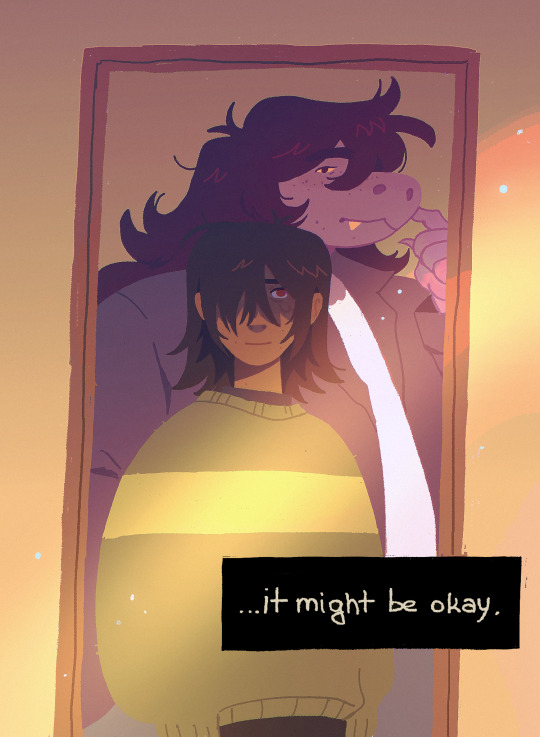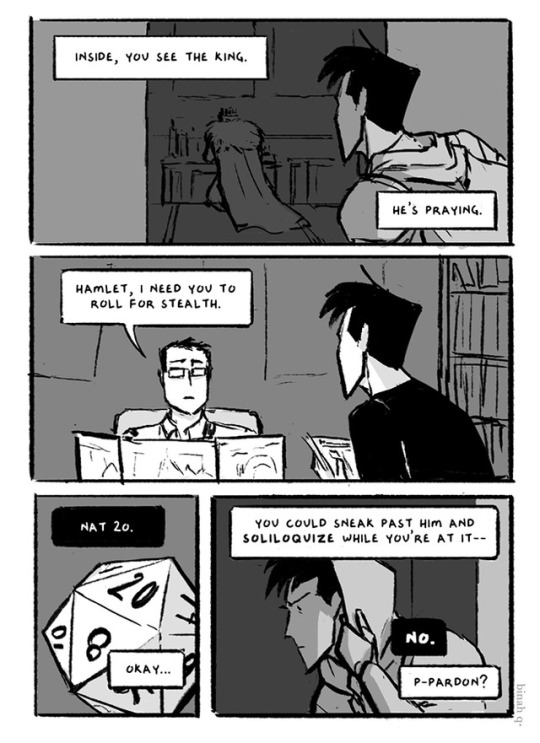Text


two kris drawings I didnt rlly know if i wanted to post I can't tell if I like or dislike them 😮💨 I wanna get good at drawing that armor though I feel like I haven't quite figured them out
15K notes
·
View notes
Text
Spent tonight at a local short film festival. One of the shorts was made by two 12 year olds in their backyard and it was the best short of the entire night
27K notes
·
View notes
Text
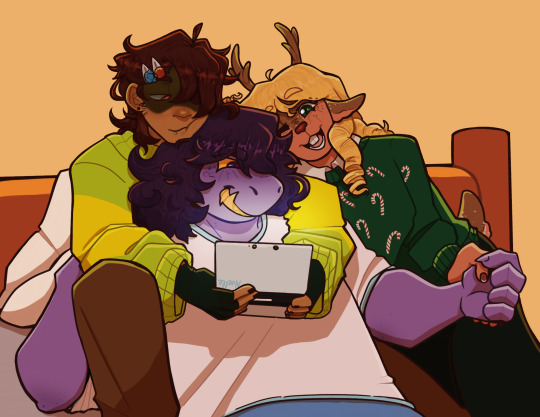

I just think they're really cute,,,,, I've just been nonstop thinking about these three
477 notes
·
View notes
Text
Hey hey hey writers!!! Especially y'alls who are struggling to develop character or have white room/still character syndrome!!!
Look into Uta Hagen's acting techniques, specifically her 9 questions. I'm not kidding. She built off Stanislavski's techniques to help actors develop their characters and roles & bring that to the stage- specifically, and this is why I'm pushing Hagen specifically and not anyone else, their relationship with the set, props, other characters, setting (yes that's different from set), history and the play's plot, and how that changes how they act and speak. I have my textbook open I'll take some pictures.


If you need a transcript/image description I'll put it under the cut, they're a little blurry cause I'm bad at holding my phone... I know alt text is a thing but I don't want y'alls to have to scroll through a tiny box lmao.
[Image 1 alt text]
The lower part of a textbook page. The text reads:
Uta Hagen's acting exercises
[Out-of-transcript note: Most of these, with the exception of Three Entrances, are less useful in terms of writers, but you could make it work, especially for roleplay.]
Basic Object Exercise: Sometimes called "two minutes of daily life," this exercise requires the actor to replicate activities from their own daily routine in specific detail (think making breakfast or getting ready to go out). The goal of this exercise is to increase the actor's awareness of their un-observed behaviour.
Three Entrances: Starting offstage, the actor enters the environment of the scene. The actor's performance should answer three questions: What did I just do? What am I going to do? What is the first thing I want?
Immediacy: Hagen asked actors to search for a small object that they need. You can perform the exercise on a set or in your home. As you search, you should observe the behaviour and thoughts that arise as you authentically try to find something. The objective is to identify the thoughts, behaviours, and sensations you experience when you genuinely don't know the outcome, so you can use them on stage.
Fourth Side: This exercise starts with a phone call to a person you know. You should call them with a specific objective in mind. During the convention, Hagen wants you to focus on your surroundings and the specific objects that your eyes rest on. The purpose is to help actors observe how they interact with all dimensions of an enclosed physical space so they can recreate privacy on stage.
Endowment: this exercise is designed to help actors apply their observed behaviours to endow props with qualities that they cannot safely have on stage. Hot irons and sharp knives are typical examples. The Endowment excercise asks actors to believably treat objects on stage as though they have the qualities the actor needs in a scene.
Uta Hagen's exercises are her greatest gift to actors working today. She developed them between Broadway jobs to solve some acting problems she had never seen anyone tackle to her satisfaction. The result is that Hagen's exercises give actors a way to observe human behaviours and catalogue it so they can recall it onstage when useful in a role.
[Image 1 alt text end]
[Image 2 alt text]
Most of a textbook page. The image cuts off about 3 quarters of the way down the page. The text reads:
Uta Hagen's 9 Questions
Who am I? This question's answer includes all relevant details from name and age to physical traits, education, and beliefs.
What time is it? Depending on the scene, the most relevant measure of time can be the era, the season, the day, or even the specific minute.
Where am I? This answer covers the country, town, neighbourhood, room, or even the specific part of the room.
What surrounds me? Characters can be surrounded by anything from weather to furnishings, landscape or people.
What are the given circumstances? Given circumstances include what has happened, what is happening and what will happen to a character.
What are my relationships? Relationships can be with the other characters in the play, inanimate objects, or even recent events.
What do I want? Wants can be what the character desires in the moment, or in the overall course of the play. [Out-of-transcript note: I recommend figuring out both for writing, the former multiple times for whenever it changes! Outside of Hagen's technique, we call it objective and superobjective.]
What is in my way? This is the actor's chance to understand the obstacles the character must react to and overcome.
What do I do to get what I want? In Hagen's teaching, "do" means physical action.
Uta Hagen's nine questions help actors develop the granular details of their character's backstory. The questions come from Hagen's first book, "Respect for Acting," though in her later book, "A Challenge for the Actor," she condensed her original nine questions into six steps.
Uta Hagen's revised six steps to building a character are:
Who am I?
What are the circumstances?
What are my relationships?
What do I want?
What is my obstacle?
What do I do to get what I want?
Later in her life, Hagen distances herself from her first book and encouraged her students to rely on her second book, which she felt was clearer about her concepts. Both books are popular with acting teachers and students today, however. Hagen's questions and steps are the foundation for all of her acting exercises. Whether you rely on the nine questions or the six steps depends on personal preference.
[Image 2 alt text end]
Personally I like the 9 questions more, but like the book says, personal preference! So yeah, if you're a writer, try some of these out for your characters. :]
2K notes
·
View notes
Text
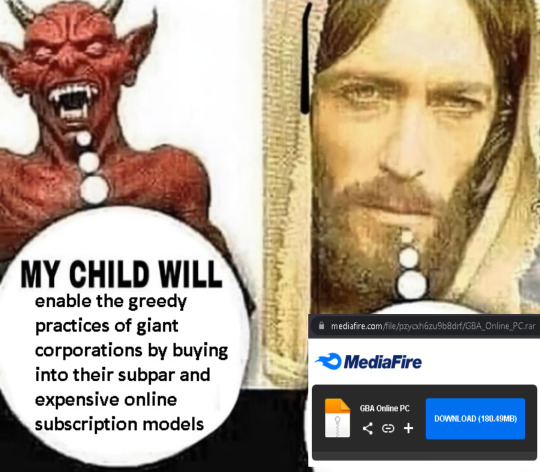
I hate Nintendo Switch Online. I hate the lack of optimization. I hate the expensive subscription service. I hate the lack of games. I hate the limited time releases. I hate that it's never gonna have the level of content that the Wii virtual console had. I hate what capitalism has done to gaming.
This collection includes: All the GBA, GB and GBC games currently available on the Switch!!

+ And a few extra bonus!! Mostly from the same series'seses

Download here for free!!: https://www.mediafire.com/file/pzycxh6zu9b8drf/GBA_Online_PC.rar (405 MB Uncompressed)
They're all ready to be played in HD on PC. Just drag and drop the files on the included program
129K notes
·
View notes
Text

saw this cute post and now I'm not going on reddit for the rest of the day. quit while you're ahead
81K notes
·
View notes
Text



Butterflies feeding off the tears of turtles in the Amazon. This is uncommon for the butterflies as minerals such as salt can be scarce in certain regions, so the turtles salty tears give the butterflies the nutrients they need for survival. Photo: Jeff Cremer
3K notes
·
View notes
Text
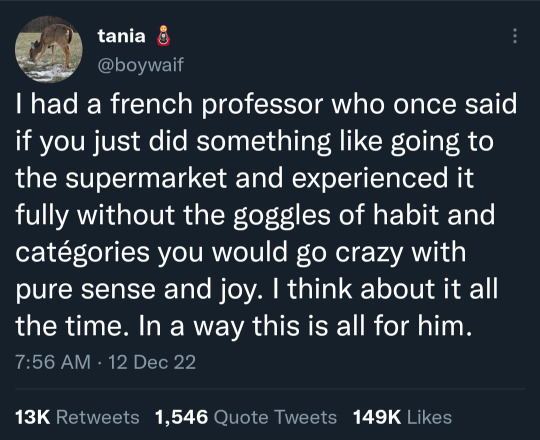
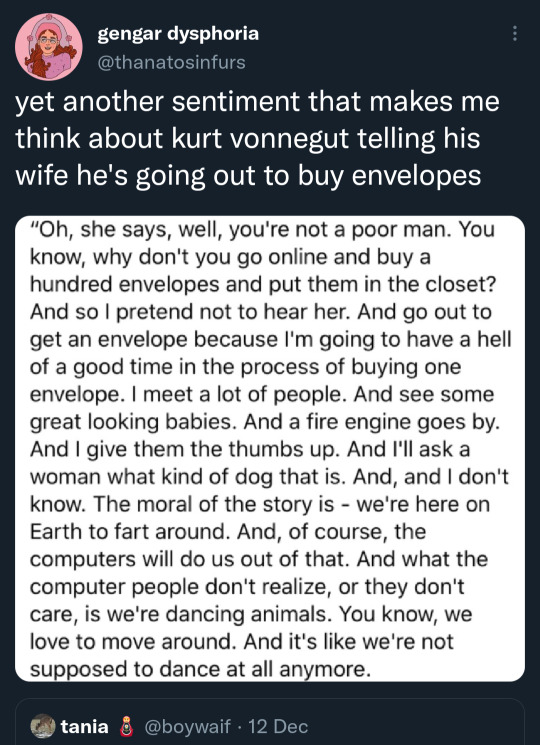
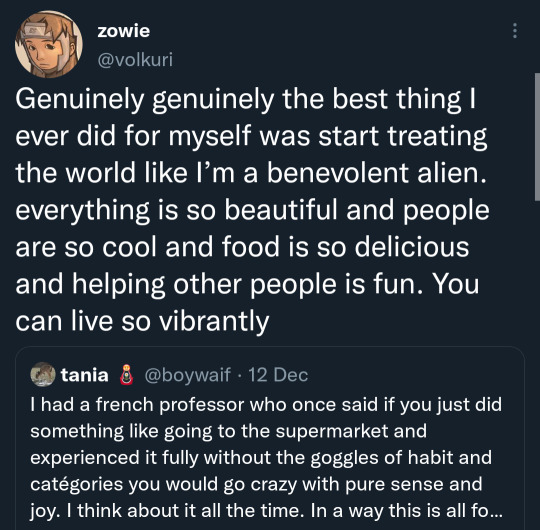
On a lighter + adjacent note i love dis tweet + these QRTs of it ^_^... literally...
82K notes
·
View notes
Text
I love that psychic powers are still "allowed" in science fiction. They're an acceptable part of the aesthetic. Like you can't have magic, but you can have brain magic, because it's more Science.
16K notes
·
View notes
Text
One of the (few) things that annoys me about LeGuin's writing is the way that if a character is bad, they are bad all the way down. The protagonists and "good guys" are often deeply flawed, but as a reader i never question their ultimate "goodness" and moral nature, and their gray qualities end up attributed to misguidedness or ignorance rather than malice.
If a character is going to be "bad," I almost always pick up on it from the first description of them. In part, because she employs this Tolkien-esque technique of making the bad characters physically repulsive. Conversely, the good characters, whether or not they are particularly beautiful, are given more positively-connoted descriptions. Ged has a "hawk nose," rather than a "big nose" or "hooked nose."
Ged, Tenar, Shevek, and countless other LeGuin heroes are complex characters whose actions often hurt those around them, but the narration spares them from the judgemental language that it heaps upon "evil" characters, and I think all of this weakens her storytelling by reducing the stakes of morally complex situations. As a reader, I have no reason to doubt that the heroes will make the right choice in the end.
17 notes
·
View notes
